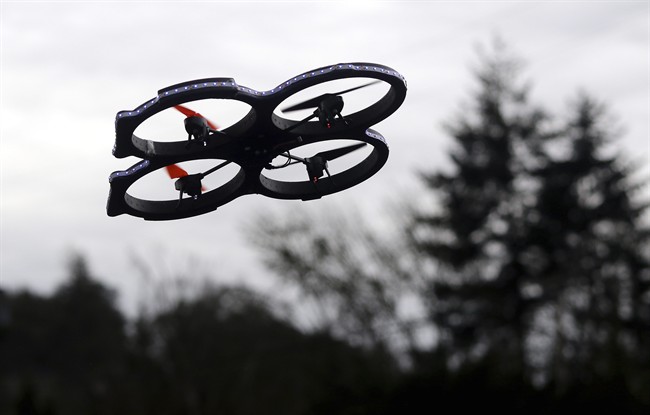Wearable tech, autonomous cars and so-called hoverboards – these are just some of the tech trends that defined 2015. But what will be the standout stories of 2016?

From advances in 3D printing materials, to better consumer awareness about cyber security, here are just some of the things you can expect from the tech industry over the next year.
Tablet-laptop hybrids will replace the laptop
Keith McWhirter, an information technology expert at Queen’s University, says the tablet-laptop hybrid device will continue to be favoured by consumers as laptops fall more out of favour in the New Year.
“You’re seeing these devices coming and not just being toys – they are becoming the mainstay,” said McWhirter. “They are replacing the laptop and, in some cases, replacing the desktop too because of the power they have.”
Microsoft was the pioneer of this trend with its Surface Pro tablet, which features a fold out keyboard; but this year, competitors like Apple also launched high performance tablets built for heavier computing and physical keyboards.
As for the desktop computer, McWhirter believes we will see more and more consumers making the desktop the entertainment centre of their home, using it for things like gaming.
“It’s almost like you had the desktop and the mobile device was a toy – now that has switched,” he said.
Advances in 3D printing
- B.C. to ban drug use in all public places in major overhaul of decriminalization
- Posters promoting ‘Steal From Loblaws Day’ are circulating. How did we get here?
- Canadian food banks are on the brink: ‘This is not a sustainable situation’
- 3 women diagnosed with HIV after ‘vampire facials’ at unlicensed U.S. spa
2016 will bring new advances in 3D printing, according to research firm Gartner.
“We’ll see continued advances in 3D printing with a wide range of materials, including advanced nickel alloys, carbon fiber, glass, conductive ink, electronics, pharmaceuticals and biological materials for practical applications expanding into aerospace, medical, automotive, energy and the military,” said the firm.
Gartner analysts also noted that biological 3D printing – printing tissue, skin and organs for medical use – will continue to develop.
Consumers smarten up about cyber security
2015 was yet another record year for consumer data breaches. From the Ashley Madison hacking scandal, to the data breach affecting electronic toy and education company VTech – which affected millions of parents and children – we certainly had plenty of opportunity to learn about online safety.
In years past, many cyber security experts have argued that consumers aren’t being proactive enough about their online security – despite huge breaches.
READ MORE: How to recognize and avoid online phishing scams
But McWhirter thinks 2016 will be the year many Canadians make a resolution to be more aware about cyber security.
“I think one of the only advantages to the breaches we’ve seen in the past six months is that it drives awareness. It’s not just ‘Oh, that fortune 500 company got hacked,’ its ‘oh that company I deal with got hacked.’ It’s become much more personal,” he said.
“We are seeing consumers now ask more of these questions. They want to know what companies have the best practices in place.”
Virtual reality vacations
As the loonie continues to slide, many of us may have to put aside our travel plans in 2016. But, according to design and strategy firm Frog, virtual reality could allow us to take vacations every day.
“Online webcams are eclipsed by connected VR cams, which allow viewers to virtually transport themselves to points in space around the world and interact with the people there,” read Frog’s tech in 2016 report.
“The interactions are simple at first, but users discover that the feeling of presence engenders a sense of empathy that they never felt watching video on a 2D screen.”
The year of the drone
Drones dominated both skies and headlines in 2015. E-commerce giant Amazon announced plans to begin a drone delivery service; the FAA instated a drone registration system for consumer drone owners in the U.S.; and the unmanned aircraft were put to work – from protecting sea turtles in Mexico, to fighting crime.
But experts say 2016 will be even bigger for drones.
Consumer sales are likely to increase over the next year – especially as the technology becomes more sophisticated, offering users more than just photography and video recording capabilities.
READ MORE: B.C. wants drone regulations strengthened
While it’s unlikely we will see commercial drone delivery take off over the next year (the FAA has yet to finalize its rules from commercial drone use in the U.S.), businesses are likely to uncover new ways to use the aircraft to their advantage.
In Canada, commercial and recreational drone use is regulated by Transport Canada.
Even though there are a number of restrictions in place, businesses can obtain a commercial licence to operate drones for profit in stark contrast to the United States, where most of commercial drone use is still largely prohibited.
Haptic feedback becomes more useful
Haptic feedback has been widely used in smartphones and wearable tech gadgets. The technology uses the sense of touch to provide information to the user by sending vibrations, for example. But, according to Frog, haptic feedback could be adapted for more uses.
“2016 could see haptics incorporated into a much wider range of surfaces. Haptic feedback could let shoppers ‘feel’ the texture of clothing online, help older people regain balance with haptic insoles, or help drivers use displays without taking their eyes off the road,” read the report.




Comments